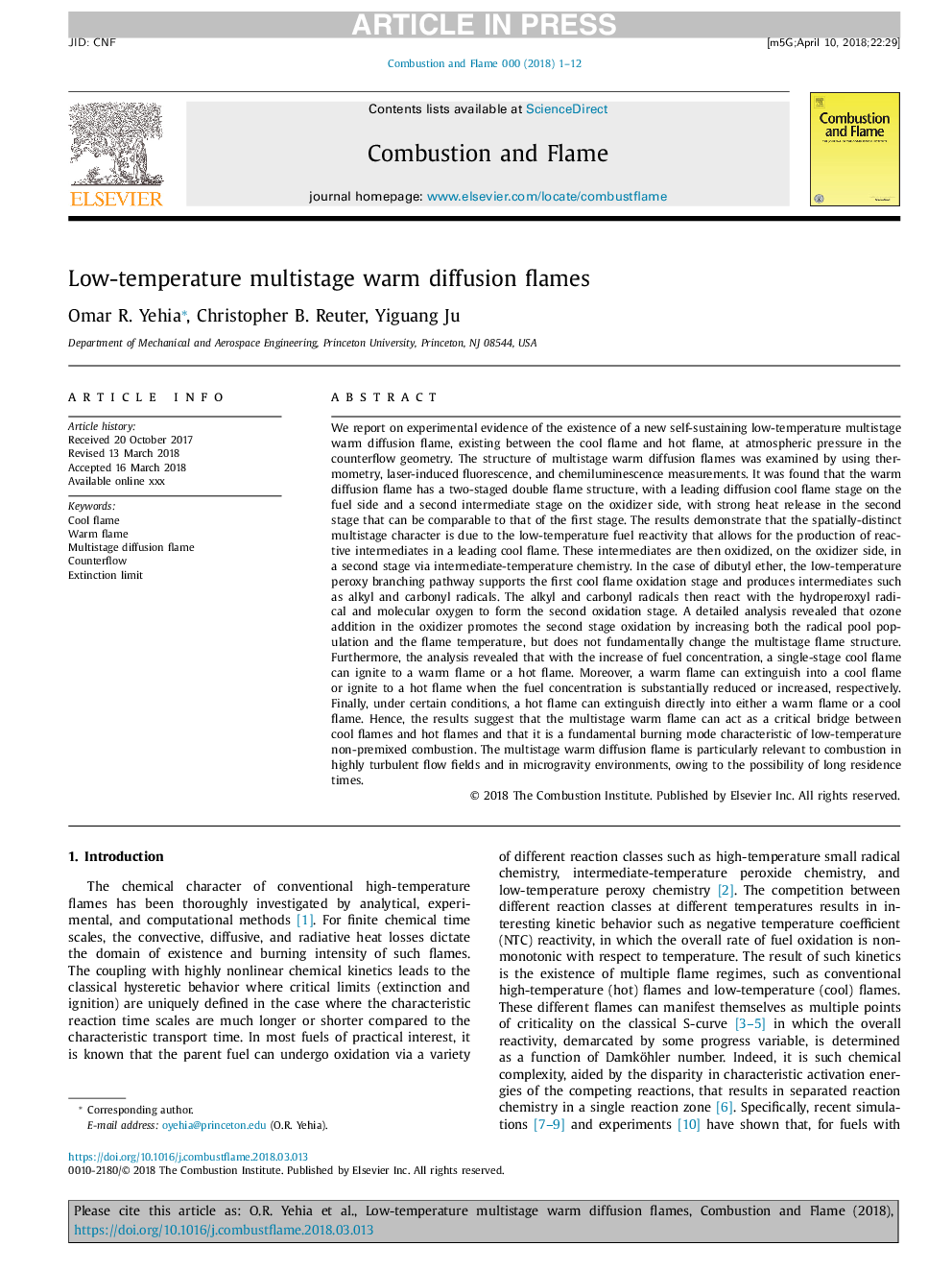| کد مقاله | کد نشریه | سال انتشار | مقاله انگلیسی | نسخه تمام متن |
|---|---|---|---|---|
| 6593403 | 1423542 | 2018 | 12 صفحه PDF | دانلود رایگان |
عنوان انگلیسی مقاله ISI
Low-temperature multistage warm diffusion flames
ترجمه فارسی عنوان
شعله های آتش گازی چند مرحله ای با درجه حرارت پایین
دانلود مقاله + سفارش ترجمه
دانلود مقاله ISI انگلیسی
رایگان برای ایرانیان
کلمات کلیدی
شعله سرد، شعله گرم، شعله نفوذ چند مرحله ای، ضد جریان، محدودیت انقراض،
موضوعات مرتبط
مهندسی و علوم پایه
مهندسی شیمی
مهندسی شیمی (عمومی)
چکیده انگلیسی
We report on experimental evidence of the existence of a new self-sustaining low-temperature multistage warm diffusion flame, existing between the cool flame and hot flame, at atmospheric pressure in the counterflow geometry. The structure of multistage warm diffusion flames was examined by using thermometry, laser-induced fluorescence, and chemiluminescence measurements. It was found that the warm diffusion flame has a two-staged double flame structure, with a leading diffusion cool flame stage on the fuel side and a second intermediate stage on the oxidizer side, with strong heat release in the second stage that can be comparable to that of the first stage. The results demonstrate that the spatially-distinct multistage character is due to the low-temperature fuel reactivity that allows for the production of reactive intermediates in a leading cool flame. These intermediates are then oxidized, on the oxidizer side, in a second stage via intermediate-temperature chemistry. In the case of dibutyl ether, the low-temperature peroxy branching pathway supports the first cool flame oxidation stage and produces intermediates such as alkyl and carbonyl radicals. The alkyl and carbonyl radicals then react with the hydroperoxyl radical and molecular oxygen to form the second oxidation stage. A detailed analysis revealed that ozone addition in the oxidizer promotes the second stage oxidation by increasing both the radical pool population and the flame temperature, but does not fundamentally change the multistage flame structure. Furthermore, the analysis revealed that with the increase of fuel concentration, a single-stage cool flame can ignite to a warm flame or a hot flame. Moreover, a warm flame can extinguish into a cool flame or ignite to a hot flame when the fuel concentration is substantially reduced or increased, respectively. Finally, under certain conditions, a hot flame can extinguish directly into either a warm flame or a cool flame. Hence, the results suggest that the multistage warm flame can act as a critical bridge between cool flames and hot flames and that it is a fundamental burning mode characteristic of low-temperature non-premixed combustion. The multistage warm diffusion flame is particularly relevant to combustion in highly turbulent flow fields and in microgravity environments, owing to the possibility of long residence times.
ناشر
Database: Elsevier - ScienceDirect (ساینس دایرکت)
Journal: Combustion and Flame - Volume 195, September 2018, Pages 63-74
Journal: Combustion and Flame - Volume 195, September 2018, Pages 63-74
نویسندگان
Omar R. Yehia, Christopher B. Reuter, Yiguang Ju,
